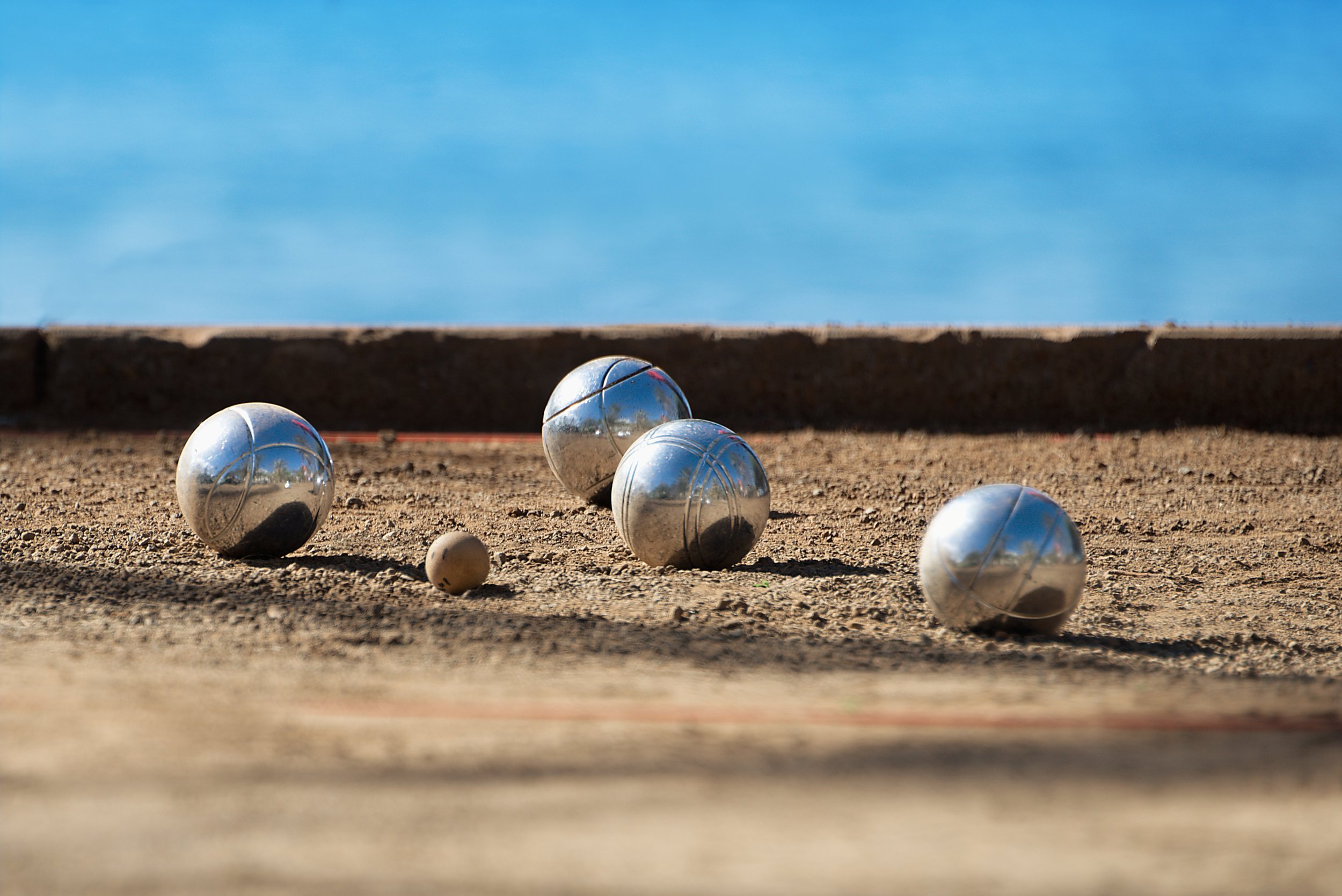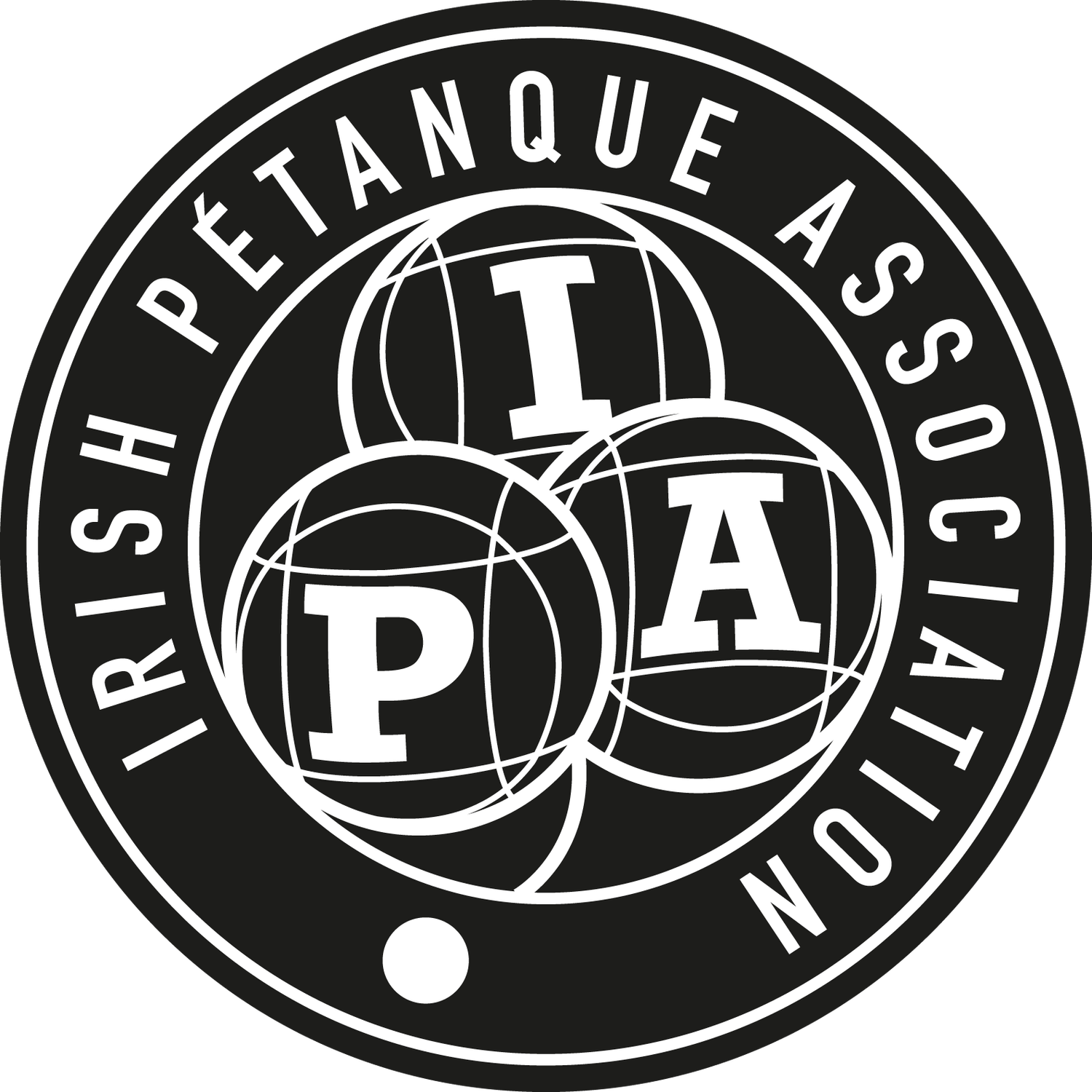
Welcome to the Irish Petanque Association
ABOUT US
Petanque in Ireland
The Petanque Association (IPA) was set up in 1990. It is the governing body for the sport in both Northern Ireland and the Republic of Ireland. It comprises of affiliated clubs, and non affiliated clubs.
Our aim is to promote the development of the sport of petanque in Ireland for everyone, regardless of age, gender or ability.
For such a small country, clubs tend to be located at considerable distance from one another. The IPA seeks to bring people together through its competition programme and facilitating major club events.
Since the IPA’s inception, we have always competed in the annual Celtic Challenge with Scotland and Wales and, on occasion, in the Home Nations Tournament.
The IPA is affiliated with to the Confederation Europeene de Petanque (CEP) and the Federation Internationale de Petanque et Jeu Provencale (FIPJP) which is the global governing body of the sport.
Ireland has competed in the World Championships and the European Championships. Ireland has also been represented in the Ladies’ World Championship in 2013
Any organisation wishing to find out more detail about the game or events should contact us or clubs that are affiliated to the IPA.
National triples in Marlay Boules Club ‘23
What is Petanque (boules)
Boules is wonderfully straightforward, akin to horseshoe throwing. There's a mark, and your aim is to get as close to it as you can.
What truly makes petanque captivating is that you can be in the lead one moment, only to find yourself trailing the next, or vice versa. The outcome isn't settled until the very last player throws their final boule. If they shift the target ball or displace an opponent's boule, the arrangement of the boules—and thus your score—can change dramatically.
Who can partake in this game?
The answer is straightforward: anyone. Age, strength, or speed don't matter. Seasoned players against beginners? Luck always plays a role, particularly on uneven terrain, so neither the novice nor the "pro" should feel disheartened. Wheelchair competitions are also popular. In fact, boules evolved from an old French bowl game called "la boule Provençale" in the early 1900s when one of the former champions, now afflicted with arthritis and reminiscing about the good old days, proposed an end to running and jumping: everyone should throw boules while standing still, feet together, within a small starting circle. The old champion was back in the game! Nowadays, in numerous town squares across France, boules are played day in and day out. While retirees dominate weekdays, teenagers and others looking to unwind join them after school or work and on weekends. Meanwhile, the news of the day circulates, occasionally interrupted by lively debates about the measuring skills of the opposing team. Yet, always in good spirits, for if you don't win today, you'll win tomorrow, or next week, or next year. These players are more than friends. One day, their children will play together, just like they do...
France, particularly Provence where boules originated, has always been a favored holiday destination. Consequently, more and more tourists began playing with the locals, purchasing sets, and introducing the game back home, in Germany, Great Britain, Holland, Belgium, Scandinavia, Spain, and beyond.
What kind of playing surface is used?
Any surface works, except for concrete, asphalt, or tiles. It's best if it's not too soft; on a completely soft sandy beach, for instance, the boules won't roll much. However, most beaches have firmer spots, near the dunes, which are ideal. Very short grass is suitable too. The best option is hard ground with some stone chipping. These kind of areas can be found in car parks, public areas, or even on the side of the road. There are no limits to the maximum size of the playing area. The generally accepted minimum is 4 meters wide by 12 meters long.
The Petanque Pointer or Shooter??
After a while, most players begin to specialize in either "pointing" or "shooting." Pointing entails approaching the target ball with precision and placing your boule in a strategic position, often achieved by lobbing the boule. After touching the ground, it rolls the remaining distance. A shooter, on the other hand, aims directly for an opponent's boule to knock it out. When done accurately, the incoming boule will replace the other one—a spectacular sight known as a "carreau," the perfect shot. In triplettes (teams of 3 players), you'll typically find an all-round player ("milieu") who excels in both pointing and shooting. Their skills come in handy when one of the other two players runs out of boules.
Where does the term "boules" originate from?
As mentioned earlier, both feet must remain stationary when throwing a boule, with no run-up. In the Provencal language, this is called "pieds tanqués," derived from the verb "tanquer," which means to anchor or tie down. This marked the distinction from existing bowl games in Provence like "boule Provençale" and "boule Lyonnaise," where players take a number of steps before throwing the boules.
What is the difference between Boules (Petanque) & Lawn Bowls
Lawn bowls and pétanque are both popular precision ball sports, but they have several key differences:
Origin and History:
Lawn Bowls: Lawn bowls originated in the United Kingdom and is often associated with English and Scottish traditions. It has a long history dating back several centuries.
Pétanque: Pétanque, on the other hand, originated in France in the early 20th century. It is a more recent addition to the world of precision ball sports.
Playing Surface:
Lawn Bowls: As the name suggests, lawn bowls is typically played on a carefully maintained grass or lawn surface, which can vary in quality from one bowling green to another.
Pétanque: Pétanque can be played on various surfaces, including gravel, sand, or hard-packed dirt. It doesn't require a meticulously manicured lawn.
Ball Size and Material:
Lawn Bowls: In lawn bowls, the balls (bowls) are larger, heavier, and often asymmetrically weighted. They are typically made of a composite material, wood, or other synthetic materials.
Pétanque: Pétanque uses smaller, hollow metal balls (boules), typically made of steel or a similar metal. Pétanque boules are smaller and lighter compared to lawn bowls.
Throwing Technique:
Lawn Bowls: In lawn bowls, players typically roll the balls along the ground with a controlled bias, aiming to get them as close as possible to a smaller target ball (the jack). It involves a smooth, rolling delivery.
Pétanque: Pétanque players stand inside a small circle and throw or roll their boules with an underarm motion, attempting to place them close to a smaller target ball (the cochonnet or jack). There's no rolling bias involved; it's more of a throwing or tossing motion.
Playing Style:
Lawn Bowls: Lawn bowls often involves strategic play and the use of tactics to outmaneuver opponents by placing bowls in specific positions to block or score points.
Pétanque: Pétanque is a simpler and more direct game, with players aiming to get their boules closest to the jack. While there is strategy involved, it is generally less complex than lawn bowls.
Competitive Structure:
Lawn Bowls: Lawn bowls can be played in various formats, including singles, pairs, and triples, and it has a well-established competitive structure with leagues and tournaments.
Pétanque: Pétanque is commonly played in doubles or triples formats and has its own competitive structure with local and international tournaments.
Attire:
Lawn Bowls: Lawn bowls often has a formal dress code, with players wearing white or club-specific attire and flat-soled shoes.
Pétanque: Pétanque attire is typically more casual, and players wear comfortable clothing and shoes suitable for the playing surface.
In summary, while both lawn bowls and pétanque are precision ball sports with similarities in terms of aiming for a target, they differ in terms of their origin, playing surface, equipment, throwing techniques, and competitive structures. Each sport has its own unique appeal and rules, catering to different preferences and traditions.


